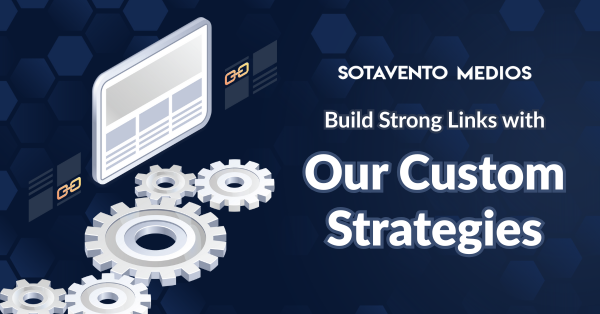The transition from a keyword-focused web to an entity-focused Semantic Web 3.0 is now a reality for search engines in 2025. For marketing managers, B2B business owners, and SEO experts, this change is crucial for visibility, authority, and the quality of leads. The main tool driving this semantic shift is the Knowledge Graph (KG).
Forget about optimizing for separate keywords; your company’s online performance now depends on how well Google and other search engines represent your entities, such as products, services, staff, and expertise, in a cohesive, machine-readable format. In a world influenced by Large Language Models (LLMs) and conversational AI, the Knowledge Graph is the structured foundation that keeps information accurate and establishes trust through verifiable E-E-A-T (Experience, Expertise, Authoritativeness, and Trustworthiness).
The Technical Imperative: Why Structured Data is Your New CMS
The Semantic Web, developed using technologies like the Resource Description Framework (RDF) and formal ontologies, enables machines to read and understand relationships between concepts. In 2025, this is essential for technical SEO.
The Unbreakable Link: LLMs and Knowledge Graphs
Recent research shows a strong and mutually beneficial connection between Large Language Models (LLMs) and Knowledge Graphs.
- LLMs for KG Construction: LLMs are now used to automate the creation of knowledge graphs by recognizing entities, extracting relationships, and generating schemas from large amounts of unstructured text. This helps reduce costs for large companies.
- KGs for LLM Reliability: The Knowledge Graph acts as a fact-checking source for LLM-driven search experiences. When users ask complex questions, the LLM pulls verified facts from the KG, helping to avoid issues like inaccuracies and “hallucinations.” For B2B, where accuracy is crucial, this structured information is vital for building trust.
This integration means your content must be designed for both humans and algorithmic understanding.
Building Your Enterprise Knowledge Graph: An Actionable Roadmap
For B2B companies with complicated product lines and technical authority, creating a proprietary Knowledge Graph is key for 2025. It shifts your site from just having information to actively engaging in the search engine’s global knowledge network.
1. Define Your Core Ontologies and Entities
An ontology formally defines concepts and relationships in your area. This goes beyond a basic keyword list to a solid structural map.
- Identify Primary Entities: Define your main concepts: your key services, product names, top executives, certifications, and unique processes.
- Establish Relationships (The Triples): Use semantic triples (Subject, Predicate, Object) to link your entities.
- Example: (Sotavento Medios, provides, Technical SEO Audits) → (Technical SEO Audits, target audience, Experienced Marketing Managers).
2. Advanced Schema Markup Implementation
The way to show your internal Knowledge Graph to search engines is through Schema.org markup, mainly using JSON-LD.
- Prioritize High-Intent Schema: For B2B, focus on Organization, Product, Service, Person (for E-E-A-T), and HowTo or FAQPage schema.
- Entity Prioritization: Avoid spreading your focus too thin. In 2025, search engines favor content centered on 2-3 main entities per page, which clearly define the central theme.
- The sameAs Property: Use the sameAs property to link your entities (your company, CEO, and specific products) to credible external sources, like Wikipedia, LinkedIn, and industry registries. This provides strong validation for Google’s Knowledge Graph.
3. Entity-Based Internal Linking Architecture
The internal linking structure of your site must change from simple navigation to a way to validate entities on your site.
- Link by Concept, Not Just Keyword: Internal links should connect pages with a semantic relationship, supporting your defined KG. The anchor text should clearly mention the linked entity.
- Old Way: “Click here for our best CRM.”
- New Way: “Our Marketing Automation Solution integrates seamlessly with your existing tech stack.”
- Pillar Content and Topic Hubs: Organize your content around main pillar pages that link to supporting cluster pages. This structure, supported by Schema markup, aligns with the Knowledge Graph format that search engines prefer and strengthens your Topic Authority.
Current Trends: Knowledge Graphs in Enterprise Search
The rise of advanced Knowledge Graph types shows their growing importance for managing complex enterprise data:
| Knowledge Graph Type | Primary B2B Application in 2025 | Value Proposition |
| Temporal KGs | Tracking pricing, product feature updates, and compliance history over time. | Enables accurate time-sensitive rich results (e.g., “What was the Q4 2024 price?”). |
| Probabilistic KGs | Risk-aware decision-making models for supply chain or financial analysis. | Allows AI to perform inference under uncertainty, crucial for B2B forecasting. |
| Federated KGs | Seamlessly integrating data from multiple subsidiaries, acquisitions, or partner systems. | Ensures data interoperability and a unified brand entity across heterogeneous sources. |
The move towards structured formats like Dependent Type Knowledge Graphs (DTKGs) highlights the need for precision in SEO. Enterprise SEO is increasingly aligning with formal data science.
The Sotavento Medios Takeaway
In 2025, the Semantic Web 3.0 has changed the competitive landscape. Your expertise is now judged by an algorithm’s ability to accurately interpret your business logic and incorporate it into a global network of concepts. Companies that succeed will be those investing not just in content creation but also in knowledge structure.
Optimizing for the Knowledge Graph is essential for B2B technical SEO. It enhances E-E-A-T, increases content visibility in conversational and multimodal searches, and structures your content to future-proof your visibility as search engines evolve with AI.

















